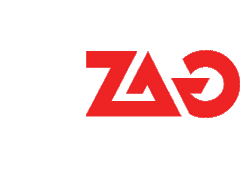
Nine ways to improve your Agency’s Productivity
At the heart of every agency’s success is the important question of productivity. How effectively does your agency use its resources? How efficient are your agency’s operations? The major pain points for agencies relate, most often, to inefficiencies across resource allocation/planning, project management, and client interactions.
Take, for instance, the fact that up to 80% of work is spent on low-value tasks like formatting spreadsheets and reports[1] tasks that have an effective ERP solution handles automatically. Or think of the fact that more than two-thirds of average-sized firms report that communication is the number one problem in their business.[2] For both of these issues, an effective ERP solution will make the fundamental difference.
In this article, we’ll look at nine different ways to improve your agency’s productivity. From centralizing projects with a single ERP solution to real-time resource management to project management to cloud-based ERP to KPIs to analytics, we’ll cover a range of ways to boost your agency’s output.
- Centralize Projects with an Integrated ERP Solution. Comprehensive ERP solutions have become more crucial to agency success than ever. They save time, money, and, ultimately, lead to better productivity. Centralization here is key. The need to switch between more than one applications to perform a single task, for instance, introduces the potential for various human errors. And the room for such errors increases as the task becomes more complicated. Additionally, extraneous processes introduce significant and costly wastes of time that add up over the long haul. Lastly, using a single ERP solution increases productivity because it provides better visibility across the entire agency’s operations.
- Real-time Resource Management. Allocating resources “on-the-fly” is known as real-time resource management, and it impacts overall productivity in important ways. Imagine the case of, say, a project manager who needs a designer for a short-run project. But the best designer is already scheduled for three major tasks expected to wrap up soon. Viewing resource allocation in real-time, however, the project manager notices that the designer completes one of the tasks ahead of schedule. An effective project manager can use the designer’s new availability with a real-time resource management solution. Here, finding the right talent through real-time resource management leads directly to increase in productivity.
- Avoid Unnecessary Meetings. Meetings are important. Client meetings allow an opportunity to build rapport with clients, which can lead to better results in the end. Meetings can also help establish that coveted “facetime,” whether achieved via video conferencing or face-to-face, so important to many agency-client relationships. But it’s critical to monitor the number of meetings your team is conducting—especially considering frequent meetings wastes time for both the resource and the client. Overall, an estimated $37 billion per year is spent on unnecessary meetings.[3] Agencies should schedule client meetings, but they should also ensure that these meetings are productive and necessary.
- Wise Project Management. Agencies often stress their creative team members. After all, these are the resources that produce the shiny deliverables that clients come to love so much. However, gains in productivity don’t come from designers and other creatives alone. It takes solid project management to deliver projects on time and under budget. Good PMs keep projects healthy by managing discovery phases, team assembly, welcome packages, project proposals, formal estimates, task discretization, roadmaps, client check-ins, and, ultimately, delivery of the final product. The work of a good project manager will ensure direct boosts in productivity.
- Cloud-based ERP. Cloud-based ERP systems save agencies money by streamlining and consolidating upgrade processes, avoiding many IT costs, and minimizing setup time. For one, users of cloud-based ERP solutions are usually not even aware of the upgrade process. Cloud-based ERP solutions are upgraded continually by the vendor, which happens in the background even while the system is in operation. Once a new version has been deployed and the user opens a new ERP session, the most current version of the system is already up and running. For another, rather than your IT team maintaining an on-premises ERP solution, they can improve valuable infrastructure to help your business grow. Furthermore, an ERP SaaS subscription is usually only a fraction of the costs of on-premises ERP maintenance. A study conducted recently found that such savings can be as high as 50 percent for a team of 100.[4]
- Reduce Project Scope Creep. Establishing clear expectations with a client upfront is one of the most effective ways for project managers to stop project scope creep. Project scope creep occurs when features that were not agreed to be included in an original project scope are requested after work for a project has begun. A project typically begins with an agreement between the client and agency regarding the precise features and the total cost. But since so many of today’s digital projects are conceived as “flexible”—or Agile in methodology—there is often a tendency to fudge these established boundaries. Once a project has begun, though, it’s best to stick to your guns and notify the client which features are in and which are out of scope.
- Key Performance Indicators (KPIs). KPIs provide invaluable insight for executives and managers. With an effective ERP solution, a user can display specific KPI data as a graph over time, showing changes in performance over a selected window of time. A CFO may want, for example, to see a utilization summary, or hours tracked to billable services versus project actuals,[5] displayed for a single quarter. This data can be viewed for other durations while comparing results.
- Avoid Gold Plating. Occasionally a designer or other creative will succumb to the tendency to overwork certain elements of a project. This kind of perfectionism—or “gold plating”—can be damaging to your agency’s productivity. When creatives spend extra time working on a component that should have been finished in a much shorter time span, the project’s profitability is compromised. Have project managers be on the lookout for gold plating. And inform creatives that gold plating works against your agency’s goals to make productivity soar.
- Internal Analytics. Analytics provides project managers, executives, and resource manager’s real-time numbers that display projected profits, work-hours, team activity, burn-down rates, and other metrics related to client behavior. Tapping into this kind of data—and using it to help manage resources and projects—can greatly improve productivity for all agencies.
